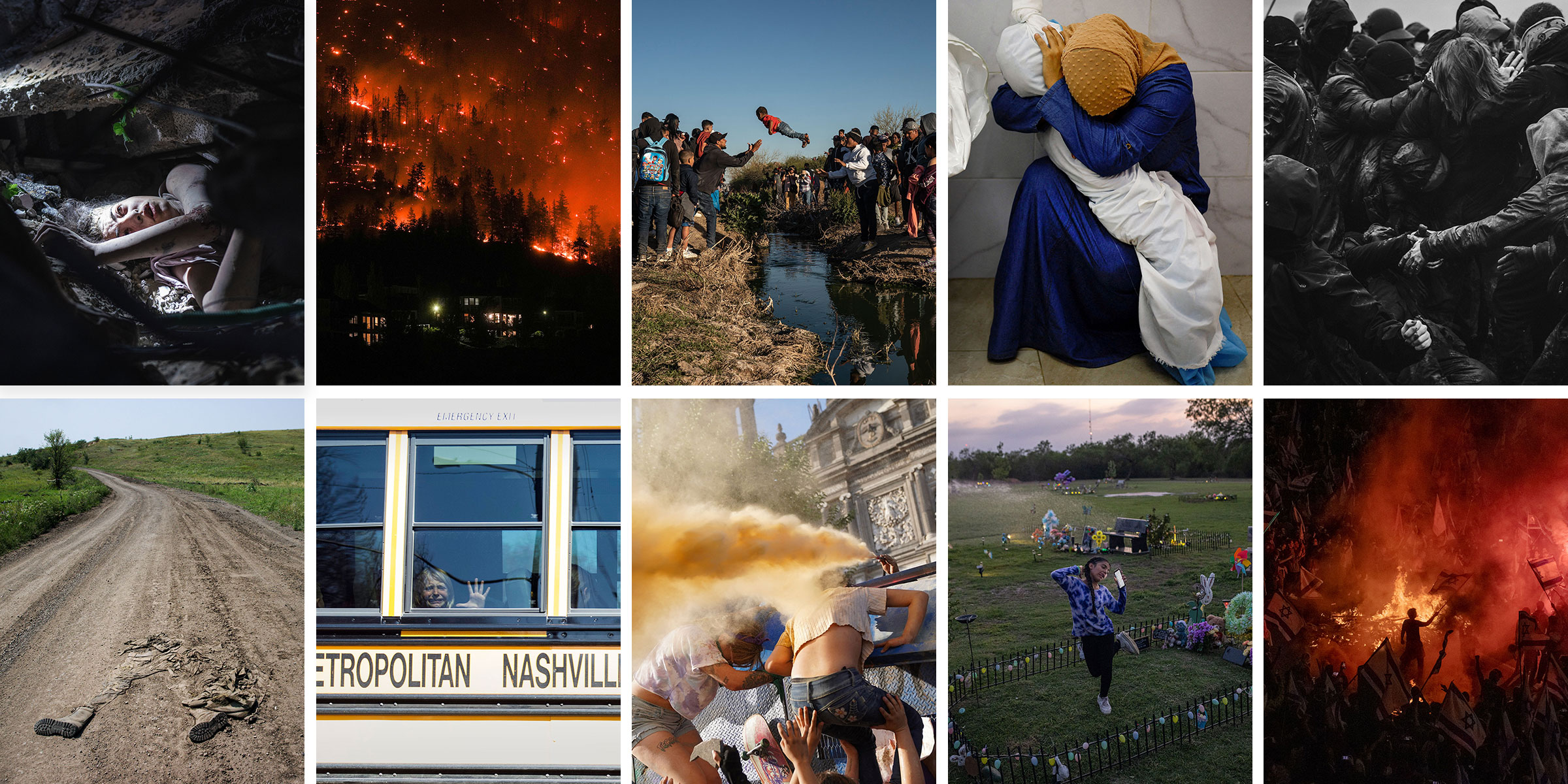What makes a photograph memorable? This tangled question has been passed around the TIME Photo Department for decades. The truth is, the answer is ever changing. As we grow into each new era of photography and technology, every day we are engulfed in hundreds of photographs, scrolling through feeds and reading through articles.
Over the years photos have reached corners of the world some never thought they would see. They have immersed us in conflict and unimaginable disaster. They have made us research, question, and appreciate. As we sit with all of that, what we’ve come up with is that a memorable photograph is one that makes us feel something. We feel moved by an image’s composition and lighting that draws our eye to each edge of the frame. We feel compelled to publish an image because of its significance in bringing the story to life.
The photographers who make these images not only make us feel, but they are feeling too. When they take the image and witness what is happening right in front of them, when they spend days and months living alongside the people they are photographing, or when they are hit with the reality of the meaning of an image long after they take it. These images and these stories are only a small portion of these experiences. But these are the images that made us, the photo editors at TIME, feel the most this year. - Kim Bubello
Warning: Some of the following images are graphic in nature and might be disturbing to some viewers.

'Humanity, Heart and Patience'
After a gunman murdered 19 children and two teachers at Robb Elementary on May 24, 2022, photographer Tamir Kalifa spent a good part of the following year documenting and getting to know the affected families in Uvalde, Texas. Not only was Kalifa photographing these families, he was also talking, dining, crying, laughing and traveling with many of them, “I felt I had built the trust to photograph freely” he says.
In the midst of his long term documentary project he was invited to attend and photograph at a birthday gathering at the cemetery for Makenna Lee Elrod, on what would have been her 11th birthday. It was after most of Makenna's family and friends went home that he witnessed 11-year-old Caitlyne Gonzales, who had lost many of her friends in the shooting, visiting the grave of her best friend Jackie Cazares. “The sprinklers went off and she ran through them, squealing and laughing as the water soaked through her clothes,” says Kalifa. “Then she stood on Jackie’s grave and did what she would have done together with Jackie were she alive – she scrolled through TikTok, and sang and danced to Taylor Swift songs”.
“This work requires being present with people during the worst days of their lives and these remarkable families allowed me into theirs to help the public grasp the consequences of gun violence from up close” says Kalifa. “For members of the media, deadline cycles and grieving patterns do not align. Therefore, if we are to attempt to visualize grief of this magnitude, we must do it with humanity, heart and patience. In Uvalde, I learned to let compassion be my guide.”
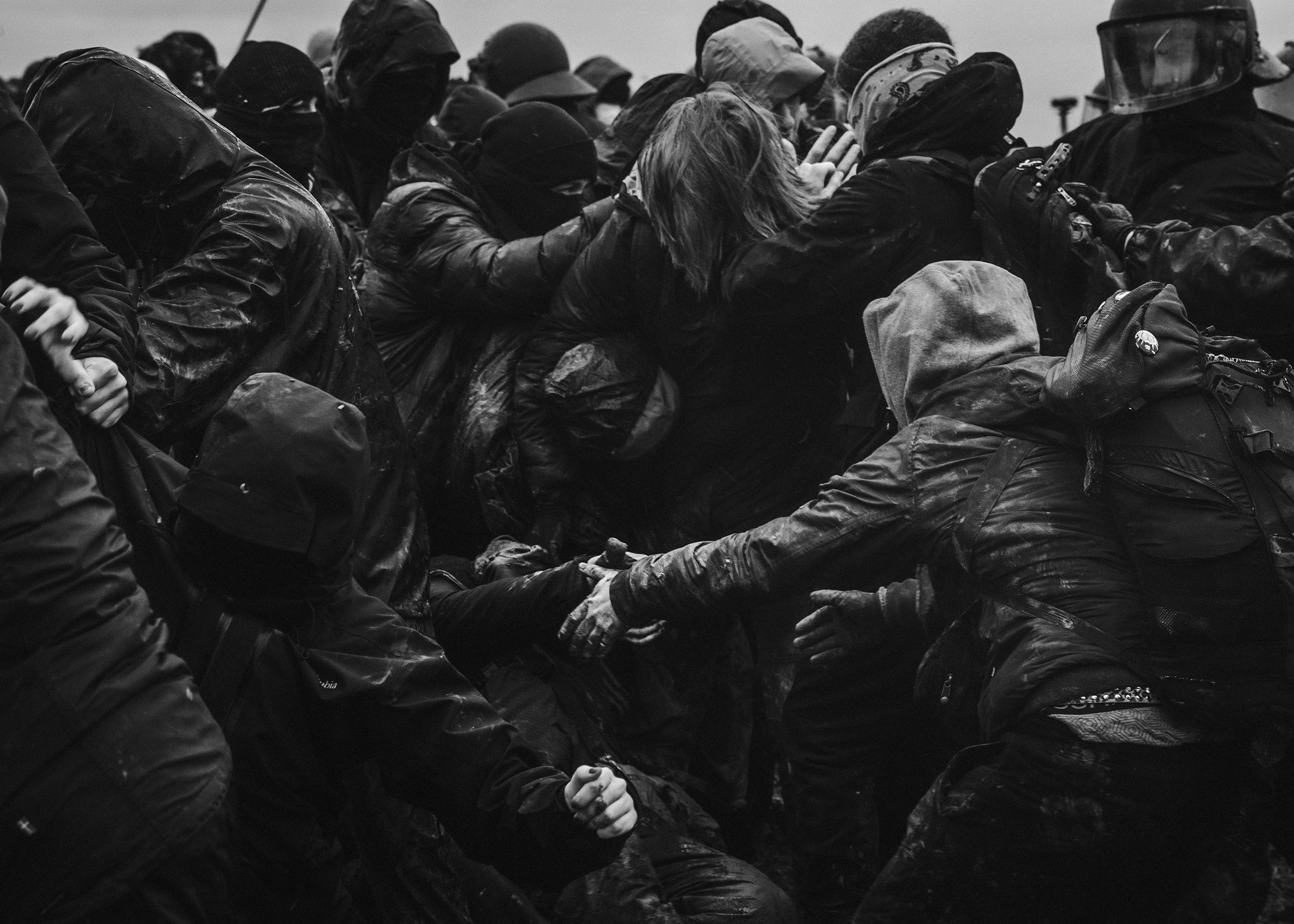
Balancing Roles
Lützerath, a small village in western Germany, became a flash point in the climate crisis after energy company RWE announced plans to expand a coal mine into it. Thousands of protesters gathered to prevent it, and Nico Knoll was one of the photographers who documented their occupation of the village. He was present the January day that 25,000 people were on hand. Police began attempting to remove those who crossed the border into the village.
Using words, Knoll searches for ways to capture what unfolded in front of him. “At that moment, my mind was filled with a mixture of shock, disbelief and empathy” he says. “Witnessing the police's brutal response to a largely peaceful demonstration was emotionally overwhelming. The challenge was to balance my role as a documentarian with my emotional reaction.”
Knoll captured a striking image. It not only documents the event but portrays a sense of anonymity that allows a viewer to experience an image in an entirely new way. It focuses on the emotion, the imbalance of force between protesters and police, all while truthfully capturing the moment. “What stayed with me was the urgency of the situation and the need to document such events truthfully” explains Knoll. “This experience reinforced the importance of photojournalism in shedding light on social issues and the responsibility to bear witness to events that demand public attention”.

‘Buenas Suerte’ and ‘Bienvenidos’
Photographer Go Nakamura was documenting migrants crossing the Rio Grande river from Ciudad Juarez into El Paso, TX when he noticed a child being tossed from one person to another across the river. He rushed to the position and waited to see if it would happen again so he could capture it.
Using a wider lens he attempted to show a fuller view of what was happening around him. “I believe that way the viewers can feel the air, atmosphere, and feel closer to the subject” says Nakamura. “Sometimes it feels like you are really there at the scene by looking at the photograph.” He speaks of the energy around the migrants at the time.: “Many of them looked very happy that their moment had finally come because they were waiting for the right timing to cross for weeks, or months.”
After covering the border for 5 years, and as an immigrant himself who came to the U.S. with his family from Japan, Nakamura brings emotions of his own to documenting crossings. “Even if they succeeded to enter the U.S., many of them still struggle finding food and shelter like what is happening in New York City now,” he says. “But this moment, the exact moment when they cross the border I always tell them ‘Buenas Suerte’ and ‘Bienvenidos.’”

'Seeing Her Through My Camera'
Motaz Azaiza is known to many for his ceaseless coverage of the people of Gaza. A photographer with a massive, newfound social media following of over 17 million on Instagram alone, his posts provide a window into the devastation and destruction happening to Gaza and its people.
In late October he encountered a young girl stuck under the rubble of a house at the Al Nusairat refugee camp after an Israeli airstrike. He could see her through a hole outside, but it was so dark within the rubble that Azaiza couldn’t confirm if she was alive or not. But a low shutter speed on his camera allows an image to appear brighter, “It’s not possible to see it with your own eyes. So I put the camera, I flipped the screen, and was seeing her through my camera” he says.
But it wasn’t until the light shone on her face from a Civil Defense rescue worker, who was attempting to administer oxygen, that he decided to take a picture. “It's painful to be in her place. It's painful to see her,” Aziza says. “She’s so lucky she survived. What about people who, there was no hole for me to see them and they [were] still stuck under the rubble and they passed with no help.”
“Talking about this makes me remember what I've been through, which I don't want to remember. I don't like to remember,” says Azaiza. “I go out in the day to cover and take pictures, but I hate mentioning what I have been through. I take pictures and record some videos on my phone, I post it and don’t look back to it. It’s not something human. It's 2024 and people are still killing each other by murder and war weapons.”
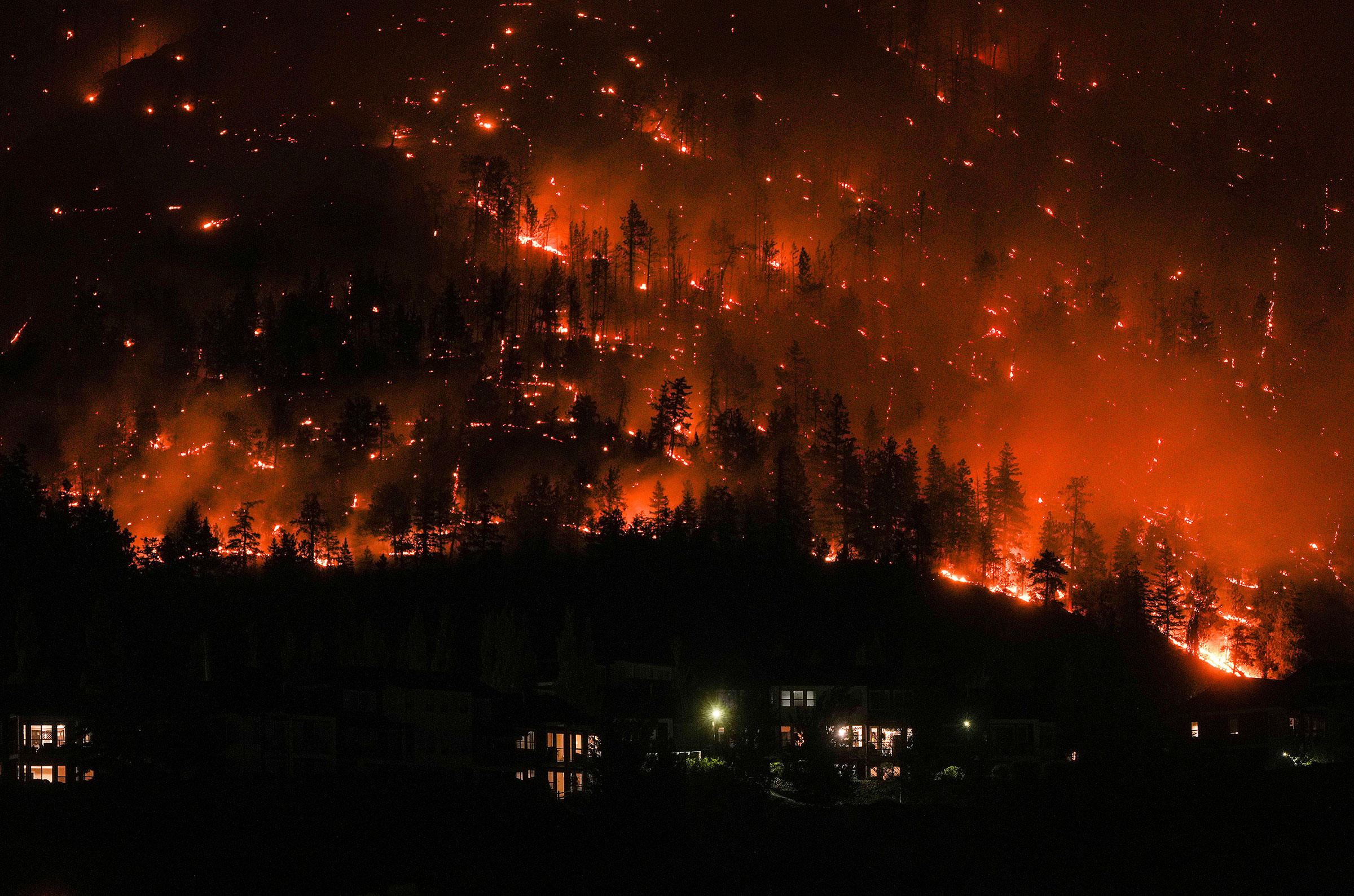
Forced to Capture From a Distance
Vancouver-based photographer Darryl Dyck heard word on the evening of Aug. 17 that a fire had worsened due to strong wings in Kelowna, British Columbia. Out of control wildfires had already been raging through Canada throughout the summer, bringing wildfire smoke and air quality warnings across the country and the U.S.
Late in the evening, Dyck made the four hour drive east from Vancouver to document the fire, arriving after two in the morning. “The glow from the fire was massive in the sky above the mountains,” he said, of approaching the city, “and there was certainly a sense that this was a very serious situation and it had grown in size throughout the evening”.
He returned to his desk to send images around six in the morning. “I would say getting to the area and making images for clients to use immediately the morning after the fire was a success” says Dyck, who because of roadblocks had been forced to shoot from a distance. “Having not been there when the fire first began made it difficult to convey a human element to what was going on,” he says. “I stayed in the region for a few days and it was only then where that was possible”.

'Continue to Tell the Story'
On Oct. 17 photographer Mohammed Salem was at Nasser Hospital in Khan Younis documenting the aftermath of Israeli airstrikes in Gaza. While in its morgue photographing mourning families, he noticed Inas Abu Maamar searching for lost family members. She was overcome with grief.
As he took the image of her embracing the body of her 5-year-old niece, Saly, Salem was torn between two feelings: “Stop taking such pictures so I wouldn’t get more affected,” he says, “or continue to tell the story.”.
“Death and grief knock on the door of almost every house in Gaza” says Salem. “I thought this picture may reach all decision makers and the world and I hoped it would be a reason to stop the killing, strikes and destruction Gaza has seen. I’ve covered a lot of conflicts around the world but this war has been the worst one I have ever seen.”

A Visceral Cry for Justice
Mexico City-based photographer Toya Sarno Jordan was covering protests on International Women’s Day when she encountered demonstrators attempting to climb over city barricades. Many women choose to protest on the day to bring attention to rising rates of gender-based violence in Latin America.
“In a constantly changing situation,” Jordan emphasizes the importance of staying alert. “Although I was wearing a gas mask, I am looking at my camera screen as well as checking my surroundings” she says, “since Molotov cocktails and irritant gas are being exchanged between protesters and police.”
The day was filled with the tense emotion captured in this image. “Seeing this visceral cry for justice year after year has been a moving experience that remains among the most powerful movements I have witnessed,” Jordan says. “Lines of female police officers dressed in riot gear accompany these protests from start to finish and protesters often clash with them and physically assault them. I've seen protesters light them on fire from head to toe. You can often hear them yell ‘This is in your name, too.’”

'Acting on Instinct'
In the beginning of the year photographer Amit Elkayam spent his Saturdays covering ongoing protests in Tel Aviv, capturing citizens who disagreed with Prime Minister Benjamin Netanyahu and his judicial overhaul plan. But when a spontaneous protest broke out on a Sunday, after Netanyahu dismissed the Ministry of Defense Yoav Galant over the issue, he knew he had to break his routine to capture what was going on.
“The energy of a months-long, countrywide protest movement erupted in full force that evening on the highway,” says Elkayam. He began to navigate his way through the chaos using detours he had learned over the months of covering the protests. “I think, at that moment, that I was acting on instinct. Running against the masses for some fifteen minutes, I got to a bridge above the highway directly overlooking the fire,” he says. “The smell there was overwhelming—a mix of burned tires, scorched asphalt, and smoke.”
This protest felt different then others Elkayam had witnessed. "As I was taking the photo, it struck me that this was something I haven’t witnessed before. I saw bonfires and major protests, but this was different. It felt like every single one of the protestors was screaming from the bottom of their lungs. Their anger went beyond politics, it felt personal" he says. “This photo was not only the result of being in the right place at the right time – it was also the culmination of months and months of work that led to that split second.”
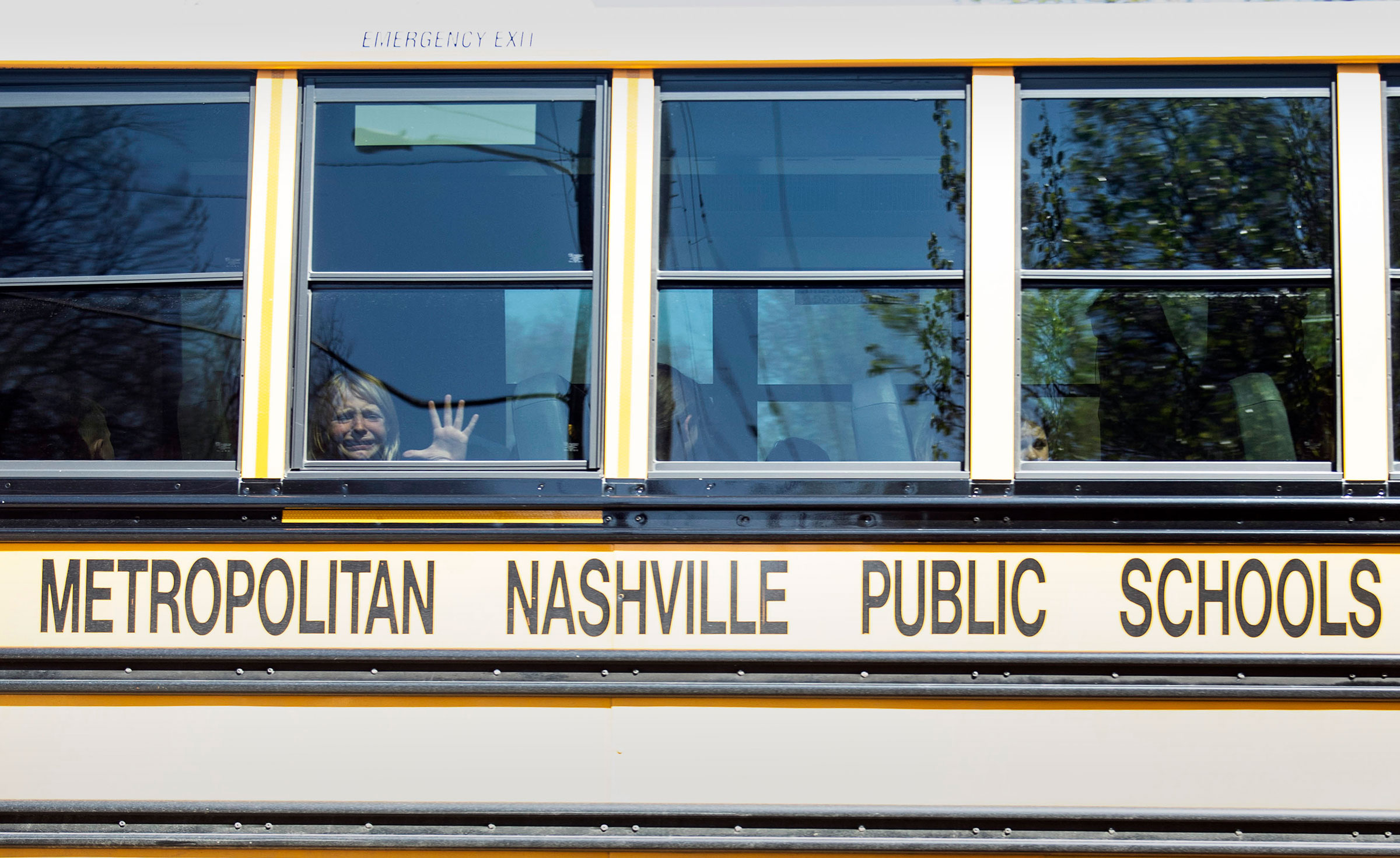
'Continue to Listen and Not Look Away'
After the shooting at The Covenant School in Nashville, where three children and three adults were killed, photographer Nicole Hester headed towards the school to document the aftermath and response. Access to the school was blocked off so Hester waited on a nearby road along with a line of parents in their cars anxiously awaiting any news. Eventually buses full of students began to roll down the street. “And then the tension burst. I remember just hearing children’s voices as the buses drove by and it made everything sink in more. It wasn’t until I was editing that I really remember seeing the photo.”
Not knowing what the children had just seen, Hester grappled with the possible consequences of its release. “I have really struggled with this image, how it seemed to be everywhere” she says. “While the responses were all very supportive from the public, I couldn’t stop thinking about her, her family. They’re seeing all of this too and I would never want to cause them any additional pain.”
But the image served as an important reminder and a truthful view of what happened that day. “The best thing to do is acknowledge that people are still living through this and we as a community have to continue to show up for each other, continue to listen and not look away,” says Hester. “I’m a community journalist at the end of the day so, you know, that is where my heart is, with the communities I serve and the people I photograph.”
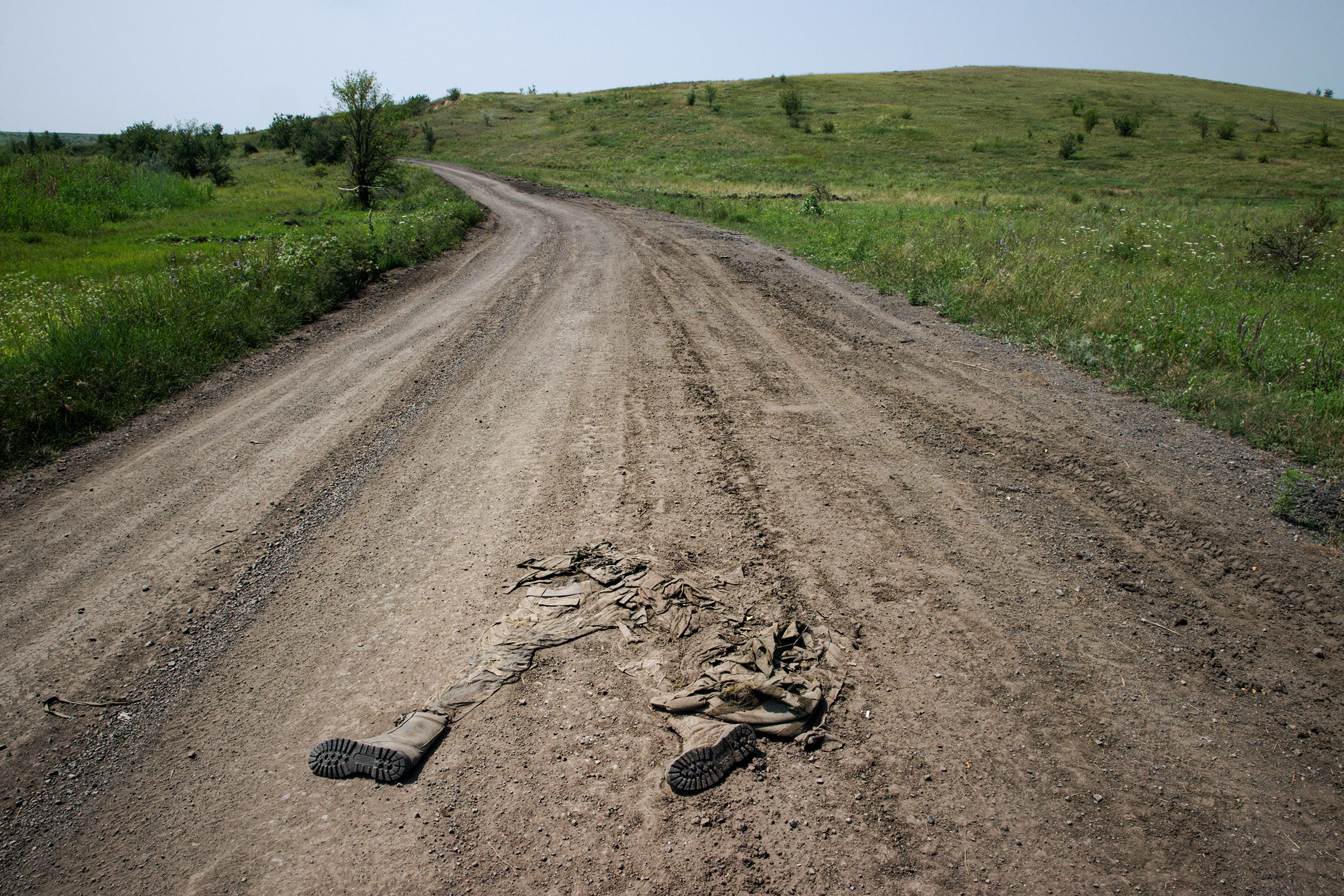
Symbol of the Passage of Time
Tyler Hicks, a senior staff photographer for the New York Times, created many compelling images from Ukraine this year. Yet this image stuck with the TIME photo team from the moment we saw it in late September. The image depicting what remains of a Russian soldier lying in the middle of a road in the Donetsk region of southern Ukraine left us bewildered and wanting to know more.
Almost two years since the conflict began this image feels like a symbol of the passage of time. A road that still looks well traveled, the boots as if untouched, framing that draws your eye to the end of the road and beyond.
When published, the photo appeared with a story by Times senior correspondent Carlotta Gall reporting on Ukraine recapturing the village of Staromaiorske from Russian forces, and Ukrainian forces attempting to cut off Russian transit routes that ran through these areas. It’s an image that combines the ability to tell the visual story of Gall’s reporting while also leaving space for viewers to wonder.
More Must-Reads from TIME
- Cybersecurity Experts Are Sounding the Alarm on DOGE
- Meet the 2025 Women of the Year
- The Harsh Truth About Disability Inclusion
- Why Do More Young Adults Have Cancer?
- Colman Domingo Leads With Radical Love
- How to Get Better at Doing Things Alone
- Michelle Zauner Stares Down the Darkness
Contact us at letters@time.com
